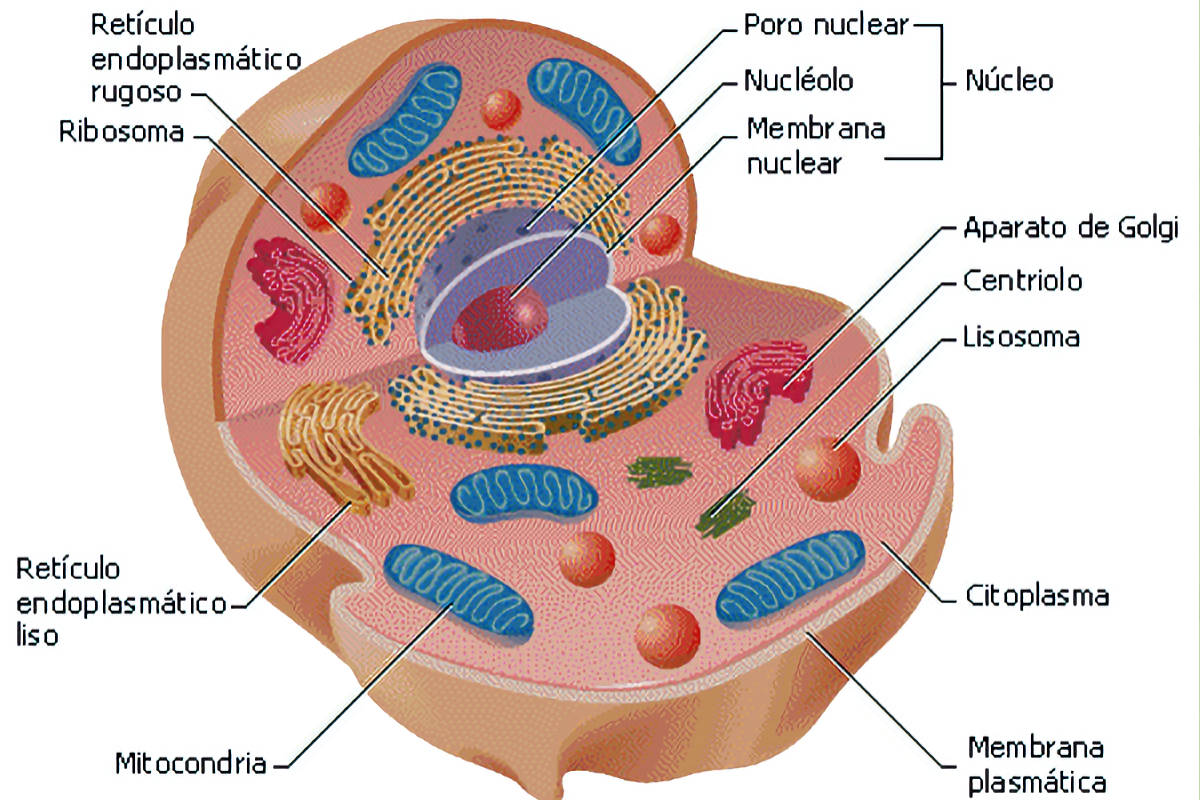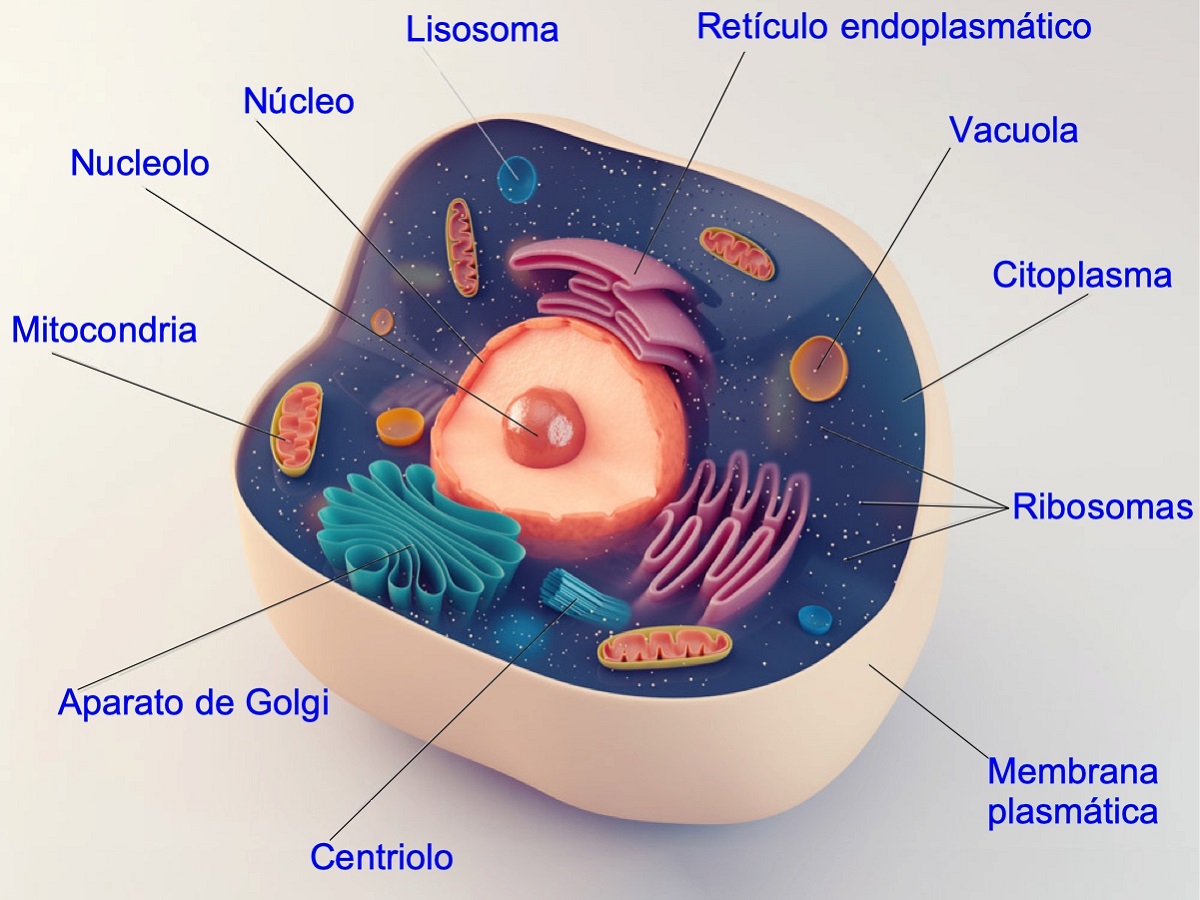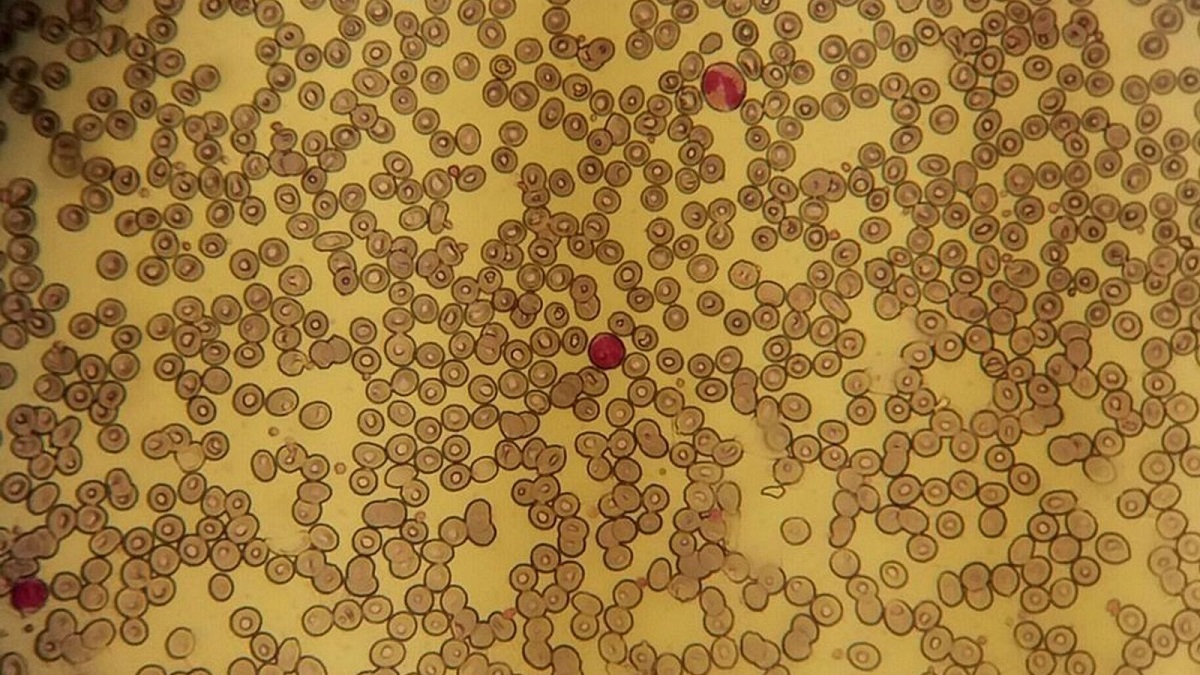
Animal cells are the building blocks of animal organisms. It is a eukaryotic cell, just like a plant cell, meaning it has a nucleus, a plasma membrane, and a cytoplasm. Many people do not know well the structure of the animal cell and its function.
Therefore, in this article we are going to explain the importance of the animal cell, its characteristics and composition.
Characteristics of the animal cell

- They are eukaryotic cells, that is, their genetic content is encapsulated in a membrane structure called the nucleus.
- They have variable shapes and sizes.
- Unlike plant cells, they do not have cell walls.
- Its organelles are membrane compartments within cells that have specific functions.
- They have centrioles, centrosomes, and lysosomes, which are absent in plant cells.
- They get their food from outside.
animal cell structure

Animal cells are basically composed of plasma membrane, nucleus and cytoplasm. Next, we will explain each one in detail.
Plasma membrane
The plasma membrane is the outer layer of the cell, through which it establishes contact with the outside environment. It consists of two lipid sheets or lipid bilayers and a membrane protein. The most abundant lipids are phospholipids and cholesterol.
Proteins allow compounds from outside the cell to enter the cell and vice versa. There are also membrane proteins called receptors. They recognize compounds outside the cell and activate intracellular signals that trigger specific responses.
The functions of the plasma membrane include:
- Regulation of the transport of substances: water and ions (such as sodium, chloride, and potassium), organic molecules (such as hormones), and gases (such as oxygen and carbon dioxide), and
- recognize foreign substances through receptors to send signals into the cell.
nucleus and nucleolus
The nucleus is the part of the cell that stores genetic information in the form of deoxyribonucleic acid or DNA. It is separated by the nuclear membrane, which is a double-layered membrane with openings, or nuclear pores, through which compounds enter and leave. The internal fluid in which nuclear compounds float is the nucleoplasm.
The nucleus is the control and reproduction center of the cell. DNA binds to proteins and forms chromatin. Information about cell function comes from DNA.
In the nucleus there is a region where chromatin and ribonucleic acid (RNA) are concentrated. This region, called the nucleolus, is the center of ribosome production.
Cytoplasm
The cytoplasm is the hydrogel-like medium where most cellular activities take place.. It is composed of water, salts, ions and proteins, and represents about 70% of the cell volume.
Also in the cytoplasm are the filaments that form the cytoskeleton, the framework that gives the cell its shape.
animal cell organelles

Animal cells exhibit different organelles and structures to accomplish different functions.
Ribosome
The ribosome is one of the non-membrane organelles. It is composed of protein and RNA and is formed in the nucleolus within the cell nucleus. It has two parts or subunits: a larger subunit or 60S and a smaller subunit or 40S.
Ribosomes are major protein production factories and between smaller messenger RNAs, transfer RNAs and amino acids are coupled to form polypeptide chains.
Endoplasmic reticulum
The endoplasmic reticulum is a membrane system composed of sacs and vesicles adjacent to the nucleus. The inner or central space is called the lumen. The rough endoplasmic reticulum gets its name from the presence of ribosomes on its outer surface. Its main function is the synthesis and packaging of proteins.
Membrane lipid synthesis occurs in the smooth endoplasmic reticulum. In muscle cells there is a smooth endoplasmic reticulum, called the sarcoplasmic reticulum, where calcium is stored, which is necessary for muscle contraction.
Golgi apparatus
Materials produced in the endoplasmic reticulum are sorted and packaged in the Golgi apparatus. Vesicles from the endoplasmic reticulum fuse in the cis plane of the Golgi apparatus and deposit their transported material there.
Proteins and lipids are modified or "modified" in the lumen of the Golgi apparatus, in this way they are identified, classified and routed to their destination. They exit through the transverse aspect of the Golgi apparatus enclosed in secretory vesicles.
Mitochondria
Mitochondria are organelles responsible for producing energy in animal cells from glucose and other molecules. The chemical energy of cells is in the form of adenosine triphosphate or ATP.
Mitochondria consist of two membranes: an inner membrane and an outer membrane. The inner membrane folds inward to form the mitochondrial cristae. Mitochondria have their own DNA and ribosomes for the synthesis of specific proteins. They may originate from bacteria that are phagocytosed by eukaryotic cells.
centrosome
The centrosome is the region of animal cells that produces microtubules. It is present in the cytoplasm near the nucleus. Centrioles, which are found only in animal cells, are formed here.
The centriole is cylindrical in shape and consists of nine microtubule triplets, that is, nine groups of three microtubules.
Lysosome
Lysosomes are vesicles or membrane sacs produced in the Golgi apparatus.. They are one of the characteristic organelles of animal cells since they are not present in plant cells. They contain compounds that degrade or digest various materials.
Lysosomes are enzymes that function in acidic environments and break down proteins, nucleic acids, polysaccharides, and lipids that are no longer needed by cells. Lysosomes can be said to be "garbage" processors in cells.
Once the lysosomes function, cells can recycle amino acids, nucleotides, and other elements to build new cell materials. Lysosomes are also involved in destroying invaders, especially the cells of the immune system, which are responsible for protecting the body.
peroxisome
Peroxisomes are single-membrane vesicles, that is, they have a single lipid layer. Its name is due to the production of what we commonly know as hydrogen peroxide or hydrogen peroxide.
These organelles are important in the removal of intracellular toxins and oxidized fatty acids. Hepatocytes are particularly rich in peroxisomes.
flagella and cilia
flagella they are small whip-like structures that lie outside the plasma membrane. They allow the movement of certain cells, such as sperm and some protozoa. Cilia are shorter, hair-like structures that are also used to move cells or move substances out of cells, such as in the airways.
I hope that with this information you can learn more about the animal cell and its characteristics.